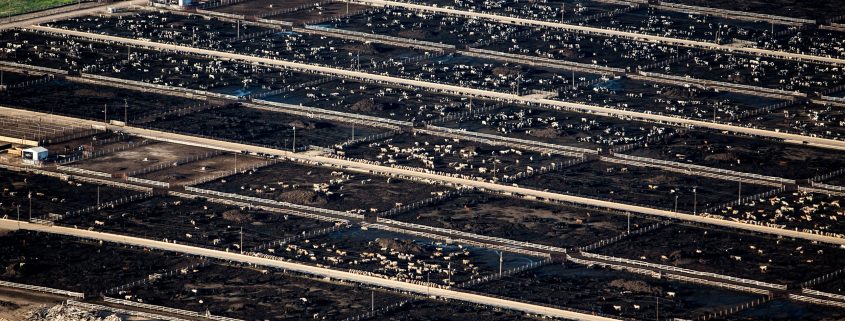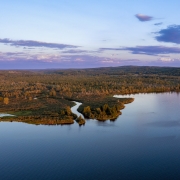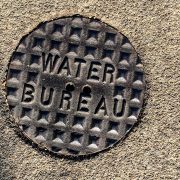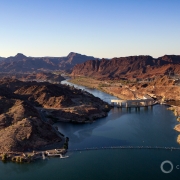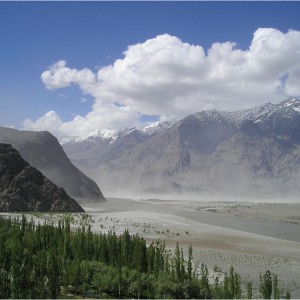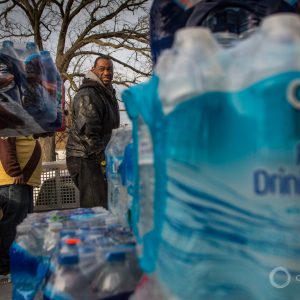EPA Turns Away from CAFO Water Pollution
Inspections and enforcement have declined since 2011, but fines for all pollution increased.
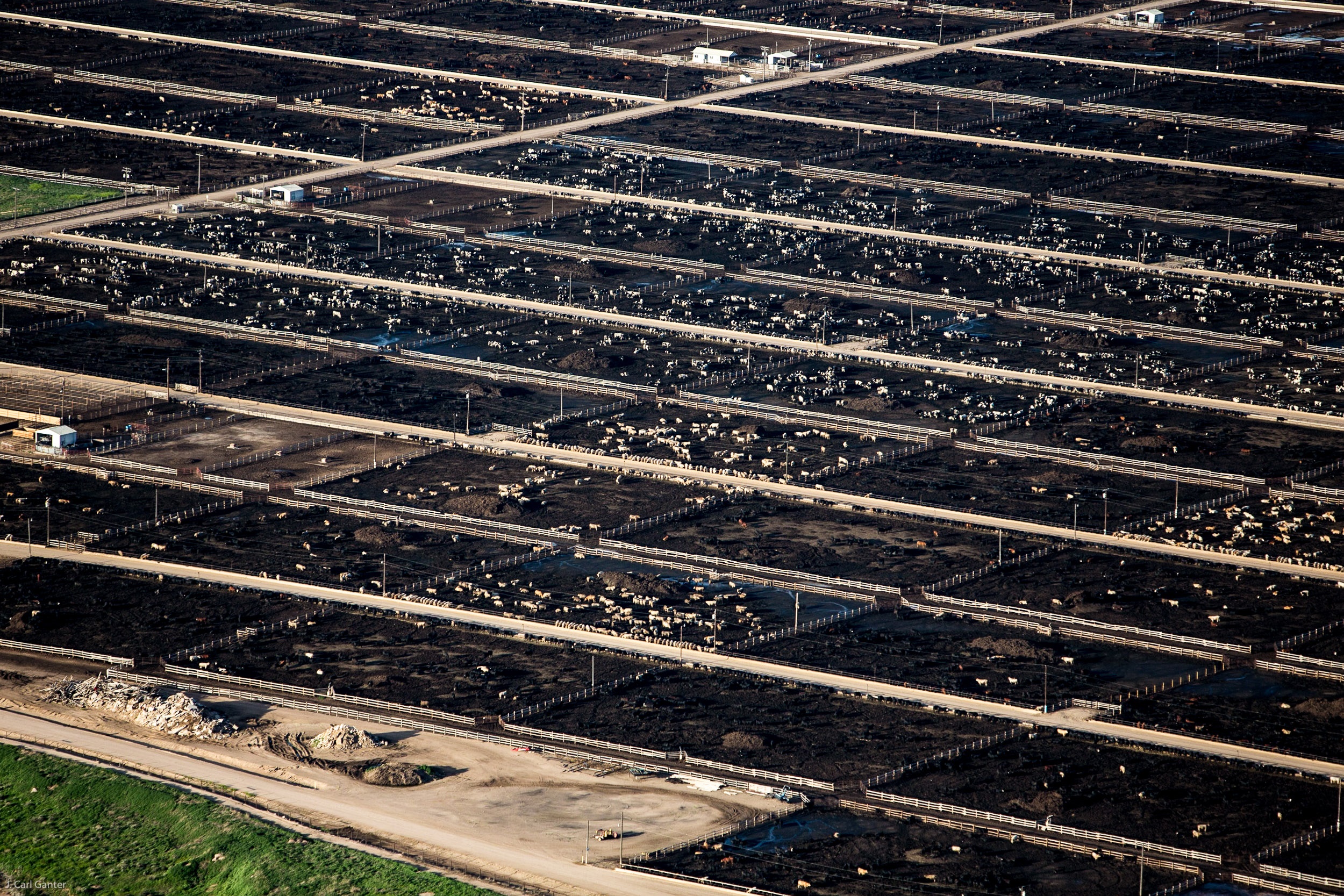
A cattle feedlot in Weld County, Colorado. Photo © J. Carl Ganter / Circle of Blue
By Brett Walton, Circle of Blue
Federal inspections of cattle and hog feedlots, turkey houses, and other animal feeding operations dropped for a fourth consecutive year, according to U.S. Environmental Protection Agency data. The number of fines and orders to change management practices for those same facilities fell for a fifth consecutive year.
The decline occurred even though EPA regulators in 2011 designated water pollution from concentrated animal feeding operations, or CAFOs, as a national enforcement priority. The priority list — including urban sewers and air emissions from chemical factories, refineries, power plants, and oil and gas development — targets serious and chronic violations of pollution laws in areas that are “particularly complex and challenging.”
In a report made public this week, the EPA also announced that it secured $US 13.7 billion in fines, penalties, and settlements from polluting companies during fiscal year 2016, including several in the oil and natural gas industry. In fiscal year 2015, the EPA secured about $US 7 billion in enforcement actions.
Critics assert that the annual decline in CAFO inspections reflects the EPA’s reluctance to stand up to the farming industry. The EPA responds that due to Congressional action to significantly reduce the agency’s budget, it applies limited staff and resources to the most severe pollution problems.
Stanching the flow of nutrients from farm fields is the country’s most persistent and formidable water pollution challenge. Phosphorus and nitrogen levels in lakes and streams contribute to the toxic algal blooms that have exploded in recent years in Lake Erie, Lake Okeechobee, and others. Most farming activities, like planting corn and growing wheat, are not regulated by the Clean Water Act, the chief federal water pollution law because they are defined as “nonpoint” pollution sources, meaning contaminants do not flow out of a single point or pipe.
Wastes from CAFOs, though, are collected at a point — generally in manure lagoons or tanks — and are subject to the Clean Water statute’s regulations.
In 2016, the EPA concluded 17 enforcement actions against CAFOs, nearly 75 percent fewer actions than the annual average during the first Obama term. Enforcement ranges from fines to orders to install equipment to trap pollutants. Likewise, the agency conducted 119 inspections in 2016, down by more than half from the 2009-2012 average.
A Planned Retreat
The decline should not be a surprise. In fact, it was planned. The EPA’s latest five-year strategy, published in 2014, indicated that the agency would pull back from inspections and enforcement and focus on the biggest polluters. Inspections have indeed dropped across all EPA programs. In 2012, the agency tallied 19,835 total inspections. Four years later that figure is down by one third, to 13,500, which is even lower than what was proposed in the 2014 strategy.
The EPA press office did not allow Circle of Blue to speak with agency officials about the decline in inspections and enforcement.
The decline is a problem that reflects a number of causes, said Robin Craig, a University of Utah law professor who studies environmental regulation. One, the agency’s work on a rule to define which waters are covered by federal pollution laws left the status of certain streams in limbo. Two, the EPA enforcement budget has held steady in the last four years but agency staff is at its lowest level since the end of the Reagan administration.
“It’s never a good sign when the EPA lack the resources to do adequate enforcement,” Craig told Circle of Blue. A limited budget means regulators must choose their battles, she added. “When the agency prioritizes, it is concerned with toxics and things that kill people. That means CAFOs, which cause a nuisance, are a lower priority.”
Called Next Generation Compliance, the agency’s new approach is about getting a bigger environmental bang out of a smaller staff and fewer regulatory bucks. It relies on electronic reporting, digital monitoring, aerial photography, sensors, and satellite imagery to more quickly identify problem areas and pinpoint the most egregious offenders. With that data in hand, the agency prioritizes “large, complex cases that require significant investment and a long-term commitment,” according to the Next Generation strategy.
In that light, the drop in enforcement actions is understandable: fewer cases but more time-consuming investigations. But the way that feedlots are regulated — often through planning documents that outline specific practices for handling manure rather than limits on the amount of nitrogen flowing to a stream — makes them trickier to evaluate from afar.
“CAFOs are inherently difficult to subject to NextGen techniques,” Craig said.
The EPA counts 19,245 CAFOs in the country, though it admits that this data is incomplete. Less than a third of CAFOs are required to have pollution permits. Most facilities are assumed not to discharge to a waterway. If a heavy rainstorm washes away manure — as happened in North Carolina in October during Hurricane Matthew — the facility is not at fault. Congress exempted such “agricultural stormwater discharges” from regulation in 1987. A federal district court upheld the exemption in 2013.
Scott Edwards, co-director of the legal team at Food and Water Watch, an environmental group, thinks that the EPA under the Obama administration has made only “half-hearted attempts” to control water pollution from animal waste — withdrawing proposed rules that would have expanded the number of operations requiring a permit and gathered information about the location, size, and type of animals at CAFOs.
During the 2008 presidential campaign, candidate Barack Obama pledged that “the Environmental Protection Agency will strictly monitor and regulate pollution from large CAFOs, with fines for those who violate tough air and water quality standards.” In 2012, PolitiFact, the fact-checking website, rated the pledge as a “promise broken.”
Edwards pointed to comments made in October by Gina McCarthy, head of the EPA, as an example of the Obama administration’s retreat from CAFO regulation.
“There has got to be some wake up calls, some aha moments, where agriculture demands [environmental change] of themselves, because I don’t think we are in a position to demand it of them,” McCarthy said during a speech at the James Beard Foundation Food Conference in New York City. She suggested the U.S. Department of Agriculture as an agency that is more trusted than the EPA among farmers, according to Politico Pro. “We are just too suspect,” she said.
That change is taking place in row crops. The SUSTAIN initiative, a collaboration between United Suppliers, a fertilizer and seed wholesaler, and the Environmental Defense Fund, a green group, is working to reduce fertilizer pollution from corn, wheat, and soybeans. Large retailers such as Kellogg, General Mills, and Unilever have signed on to promote nutrient-smart farming practices throughout their supply chains. CAFOs are not yet part of the deal, but these sorts of partnerships are already proving fertile ground for sidestepping longstanding acrimony over farm pollution regulation.
Brett writes about agriculture, energy, infrastructure, and the politics and economics of water in the United States. He also writes the Federal Water Tap, Circle of Blue’s weekly digest of U.S. government water news. He is the winner of two Society of Environmental Journalists reporting awards, one of the top honors in American environmental journalism: first place for explanatory reporting for a series on septic system pollution in the United States(2016) and third place for beat reporting in a small market (2014). He received the Sierra Club’s Distinguished Service Award in 2018. Brett lives in Seattle, where he hikes the mountains and bakes pies. Contact Brett Walton

